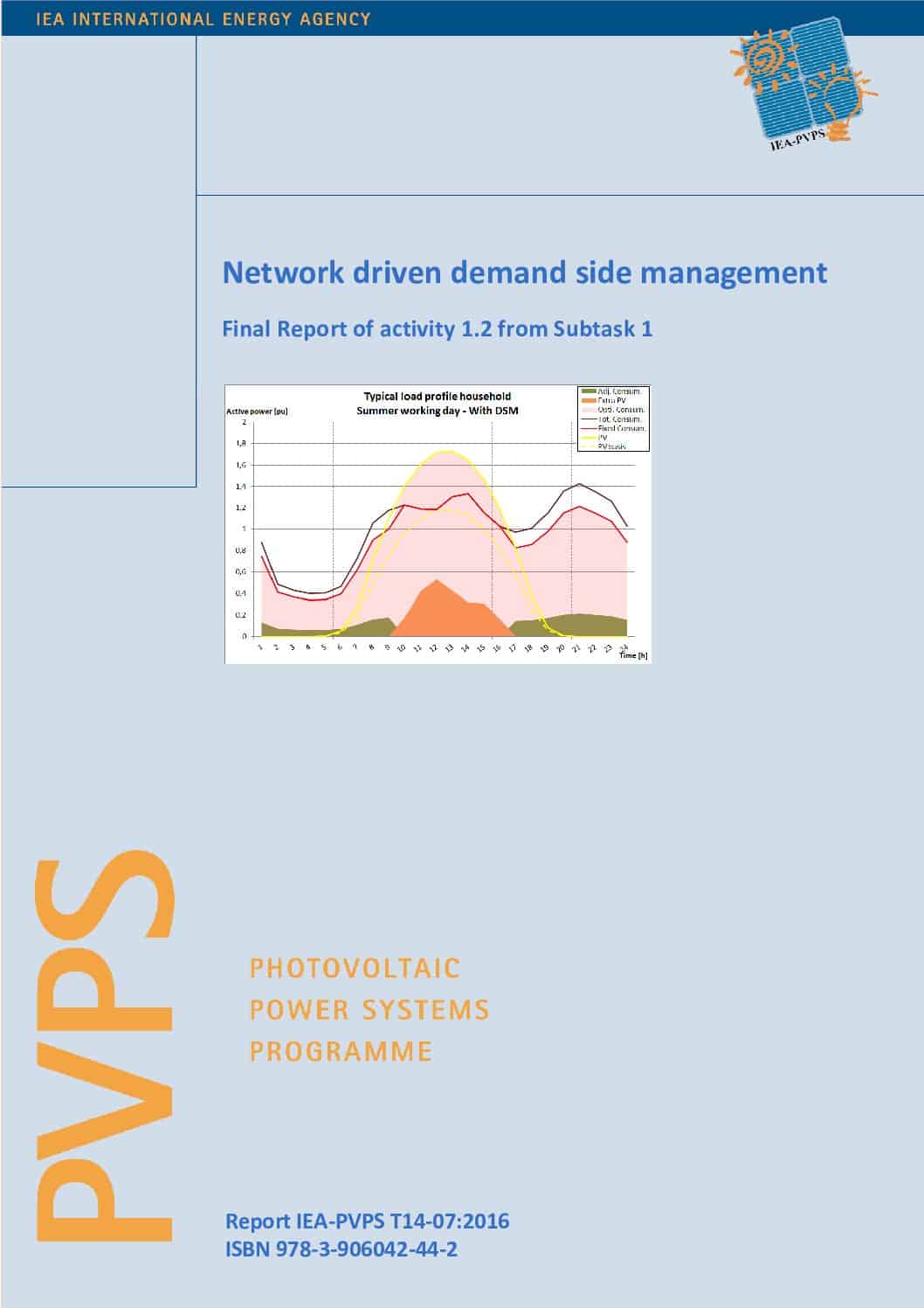Photovoltaic energy deployment is paving the way for deep changes in the way electricity is produced and the grid is managed. While multi megawatts power plants and High Voltage power system remain the main drivers for balancing production and consumption, we see now the emergence of production of electricity and storage systems at Low Voltage level. This leads to new opportunities and challenges for active power balance and power system management. Demand Side Management is identified as a major opportunity and in this report the title “Network Driven Demand Side Management” has been chosen to emphasize a collaborative approach between decentral generation, loads, storage systems and the grid.
The main conclusions of the report are the following:
- Network driven DSM involves many actors, potentially impacts many existing mechanisms, and overtakes by far the sole development of household PV. Network driven DSM is indeed closely related to many other trends such as smart metering, demand response, energy efficiency, expansion of inter communication within the power system, storage, etc.
- The question is not “why” anymore but “how”. The understanding of existing transmission and distribution controls is of foremost importance and any new controls shall adapt to power system integrity requirements.
- Taking a closer look at the study undertook for chapter 3 that considers PV without reverse flow, the following results can be highlighted: Depending on the country, the present study shows that 5% to 12% of the annual consumption can be covered by PV without reverse flow at the medium grid level. These amounts raise from 10 to 20% with DSM and up to 40% with DSM and a usual household storage (6 kWh)
- Demand Side Management is taking shape via various technologies appearing in the market and creating new directions of their own. Many different technical mechanisms already exist and the biggest foreseen challenge is the integration of all new mechanisms within the grid management in a holistic way.
- An efficient holistic mechanism raises big challenges. The organizational skills of the actors involved will be of foremost importance for technoeconomic efficiency of Demand Response development (e.g.: avoiding to 7 result in a house with 5-6 close control schemes acting on various loads, avoiding private “control aggregators” to act independently from transmission grid priorities for Demand Response, synchronizing intelligences etc.).
